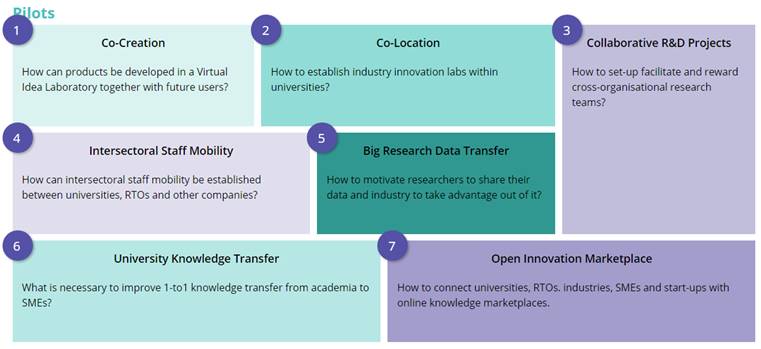Scientific knowledge developed in universities and research organisations plays a key role in the progress of our society. It facilitates the creation of new business opportunities that contribute to enhancing the well-being of European citizens. However, although the quality of our science is excellent, processes relating to technology transfer from the university to industry are not always ideal. We often find countless barriers, obstacles, and bottlenecks that prevent society from benefitting from the positive impact of this knowledge.
The Science2Society project
CIT UPC has collaborated since the start of 2016 in Science2Society, a three-year European Project that will contribute to resolving this problem. The final aim of the project is to improve the efficiency of the European innovation system by drawing up good practices for technology transfer, and preparing and disseminating information so that stakeholders can optimise these processes. The project has 18 members, including major companies such as FIAT, Atos or CA Technologies, and leading European research institutes such as KU Leuven, Karlsruhe Institute of Technology, Aalto University or Fraunhofer.
The results of the project will be obtained by analysing in-depth seven pilot technology transfer projects involving universities, industry and society. Through these seven practical cases, the real experiences of science and industry professionals will be combined with theoretical frameworks, to identify potential improvements using methods such as design thinking, process re-engineering or the management of change:
The role of the CIT UPC
CIT UPC leads the Co-location pilot project with the company CA Technologies. The University Industry Demonstration Partnership (UIDP) defines a co-location process as “The purposeful integration of industry and university personnel in a dedicated space for active research with the strategic intent of encouraging idea exchange by reducing communication and cultural barriers that accompany the physical barriers of being located in different facilities”.
After several years of collaboration with the UPC, the company CA Technologies decided to open in 2011 its European R&D Lab on the North Campus of the UPC. This successful co-location process continues today, and is being used as the basis for analysis in our pilot project. Together with the company, CIT UPC is mapping the specific processes of technology transfer that occur in the framework of a co-location scheme, identifying good practices, bottlenecks and potential solutions. The result will be shared with all stakeholders who could be interested in starting similar schemes in the future; a result that will be available at the end of 2018.
What stage is the project at?
All the pilot projects are in the execution stage. Some are expected to release preliminary results in the first semester of the coming year. Meanwhile, some useful intermediate results have been drawn up for those interested in technology transfer processes.
Recently, a Catalogue of Best Practices for Open Innovation was published as part of the project. It is based on fifteen real experiences of collaboration between science and industry. In addition, a large database has been drawn up with information on approaches to university-business technology transfer. The database will remain public and open to consultation, and will be updated constantly.
How can I take part in Science2Society?
At Science2Society, we are open to collaboration with any organisation that wishes to discuss and share its own experiences with the project. In exchange, these organisations will receive first-hand information on the project and Europe-wide visibility.
This spirit of collaboration must establish the bases for creating the future Learning & Implementation Alliance, the platform for benchmarking of technology transfer processes in Europe.
Through the Science2Society project, the CIT UPC is becoming a leading stakeholder at European level. Your organization can also participate actively in this process.
Will you join us?
CIT UPC



